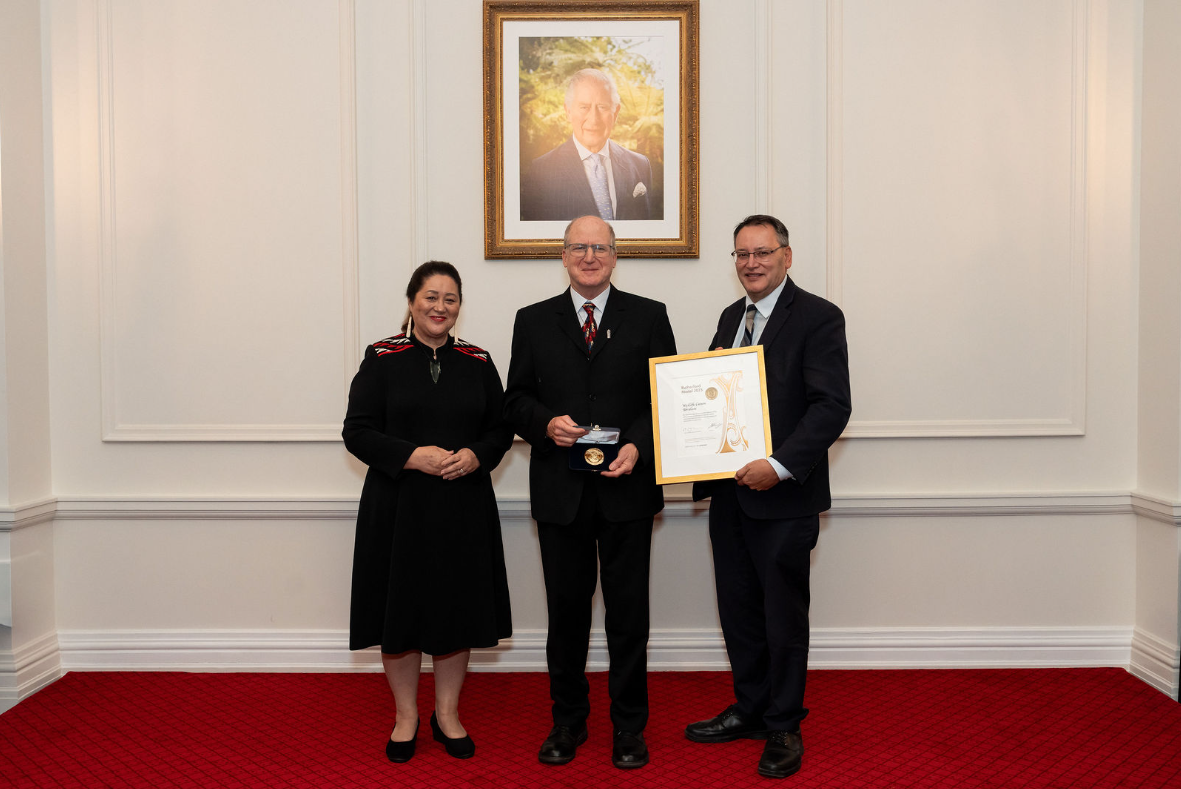2025 Rutherford Medal: How the brain makes memories

Distinguished Professor Wickliffe Abraham FRSNZ, of Ōtākou Whakaihu Waka – the University of Otago, has been awarded the Rutherford Medal for breakthrough advances in the understanding of the neural mechanisms of memory and for providing inspirational leadership for neuroscience in Aotearoa New Zealand.
Cliff’s fundamental research on synaptic plasticity has advanced understanding of how the plasticity of the brain’s neuronal cells underpins our ability to learn and form long-term memories.
Many of Cliff’s most significant discoveries have been in ‘metaplasticity’, a term he coined. Metaplasticity encompasses many mechanisms in the brain, including the priming of nerve cells for learning when encountering interesting or important new information, while also balancing the levels of neural activity to maintain stability of the brain’s neural networks, optimising their function.
His research is clinically relevant, since evidence suggests that abnormal plasticity and metaplasticity contribute to memory deficits and cognitive impairment. It has informed international research in disciplines as diverse as neuroscience, psychology, computational modelling, and artificial intelligence.

Distinguished Professor Cliff Abraham receives the Rutherford Medal from Rt Hon Dame Cindy Kiro, Governor-General of New Zealand and Hon Dr Shane Reti, Minister of Science, Innovation and Technology at an awards function at Government House.
Cliff’s fundamental research, working alongside many colleagues at Otago, has led to identification of a key protein that supports brain plasticity and memory formation. He is now investigating how that protein can be increased in the brain to improve brain function and treat neurological diseases, including Alzheimer’s.
Cliff has provided inspirational leadership in neuroscience, including through establishment of Otago’s Brain Health Research Centre and energising the Australasian Winter Conference on Brain Research over many years. He now co-leads the national Aotearoa Brain Project ‒ Kaupapa Roro o Aotearoa, and is passionate about mentoring and inspiring the next generation of neuroscientists. He genuinely engages with communities, and has promoted inclusive research by, with, and for Māori to help reduce inequities in brain health.
Cliff says that how memories are stored in the brain has been a “fascinating mystery” for him for decades, starting in his days as a university student.
“The brain is such a complex machine, but it's just made of cells. How do they perform the operations that lead to something as important as storing information?”
Understanding this is critical for fully understanding the brain and cognitive function, he says.
He studies how individual nerve cells connect with each other and how these connections change as a result of experience and learning – a process called synaptic plasticity.
“It’s the fundamental mechanism by which memories are stored, and it occurs in various places around the brain depending on the type of memory,” Cliff explained. The efficiency of this synaptic plasticity can be influenced by factors such as stress hormones or brain chemicals that affect attention.
But the brain needs to balance the overall strength of its synaptic connections, rather than constantly strengthening them.
Cliff discovered that one of the mechanisms keeping the total amount of neuronal activity across the brain network at balanced levels is a set of phenomena he named metaplasticity.
“On the one hand, if the networks are too active, we need mechanisms to dial down the ability to get synaptic change… if they're too inactive, to dial it back up.”
Also, if the brain recognises the likelihood of new and interesting information, additional mechanisms prime the brain for synaptic plasticity, allowing us to more readily learn and store information into memory.
“The brain loves novelty and this helps prime plasticity,” Cliff says.
His findings on metaplasticity have been widely applied in related fields like psychological therapy and for various types of brain stimulation or drug treatments, but also in more distant fields.
“It's used in artificial intelligence and machine learning, to help cope with some of the issues that the brain also has to deal with, like learning continually without ‘catastrophic forgetting’ of previously learned information.”
"The metaplasticity story has been an interesting road to travel, and the fact that others have picked it up as well makes it very rewarding.”
Cliff has applied his fundamental neuroscience discoveries to better understand normal brain ageing and neurological disease.
He seeks to understand how we can build greater resilience in the brain so that even if these mechanisms are not working as well and brain health is deteriorating, brain function can still appear normal.
For many of us, our brains can begin to develop neuropathology before it noticeably affects behaviour, Cliff says. Building this brain resilience is about keeping people above the threshold of dysfunction for more of their lifespan, delaying them from tipping over into neurological disease, such as Alzheimer's and other forms of dementia.
“It’s about adding life to years, not necessarily years to life,” Cliff says.
Working with many colleagues at Otago, Cliff’s team has discovered a protein that, as well as being involved with storing memories, helps keep neuronal cells in the brain healthy.
His lab is working on methods for increasing the amount of this protein in the brain to help retain good cognition and memory function in the face of neurological disease.
“We aim to help the brain better able to cope with those pathologies and continue to function well,” Cliff says.
For those of us seeking to maintain our brain health, it’s important to keep exercising the brain – the old “use it or lose it” maxim.
“Games and puzzles can be good but one thing that seems to be extremely beneficial for maintaining brain health is social interaction and social engagement.”
“Becoming isolated is a big risk factor for a variety of disorders, especially depression, which can exacerbate impairments in Alzheimer's disease and other disorders.”
Other lifestyle factors that promote brain health are those that support cardiovascular health to maintain blood flow to the brain: a healthy diet, exercise, sleeping well, and not smoking.
In receiving this medal, Cliff acknowledges Dr Phil Best who first “excited in me a love of neuroscience,” while Cliff was an undergraduate at the University of Virginia.
“I am also incredibly grateful to my research mentors during my early training years, in America, Sweden, and New Zealand, who taught me how to think as a researcher.”
He acknowledges the late Professor Graham Goddard, a leading memory and neuroscience scholar, whom Cliff followed to the University of Otago as a postdoctoral fellow.
“Upon discovering what Otago and New Zealand had to offer, I couldn’t leave.”
“This award is a recognition of what myself, my colleagues, staff, and students have as a team been able to accomplish collectively.”
“Most importantly, though, I thank my family for supporting me so strongly and unconditionally throughout my career.”
Rutherford Medal:
For exceptional research, scholarship, or innovation in any field of engineering, humanities, mathematics, sciences, social science, or technology. The medal is named after Ernest Rutherford, the physicist and Nobel Laureate, and is the most prestigious award offered by the Society.
Citation:
To Wickliffe Carson Abraham for breakthrough advances in the understanding of the neural mechanisms of memory and for providing inspirational leadership for Aotearoa’s neuroscience community.
